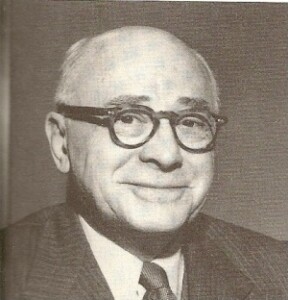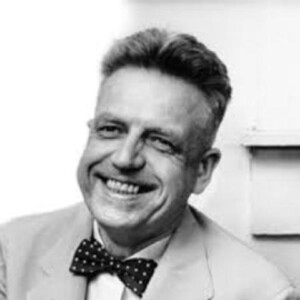Many thousands of doctors, scientists, psychologists, psychiatrists and philosophers have contributed to research and analysis of human sexuality and gender over many centuries. The timeline below, identifies just a selection of these fine people and the contribution they have made to humanities’ knowledge of sex and gender.
These people are true Gender Pioneers because they pursued medical and scientific research into sex and gender within a hostile 20th century culture that was unforgiving of those who challenged the twin pillars of the binary gender system and heterosexuality.

Dr Magnus Hirshfeld (1868 – 1935) was known as the “Einstein of Sex”; he was a German physician and sexologist, but also a Jewish homo-sexual who openly pursued research and political activism to support the “normalisation” of homo-sexuality. He established the first ever Institute of Sexology in Berlin and the World League for Sexual Reform (WLSR). The Institute was famously burnt down by the Nazis in 1933, but thankfully Hirshfeld was out of the country at the time; and indeed never returned. He coined the term “transvestite” to describe a man who like to wear woman’s clothes for sexual reasons.

Iwan Bloch (1872-1922). If Hirshfeld was the Einstein of Sex then Bloch was the Father of Sexology because he was the first scientist to formally establish the concept of sexuality as a scientific discipline, “sexualwissenschaft” which means sexology . He was a colleague of Hirshfeld’s and co-authored a “Journal for Sexology”.

Dr David Cauldwell (1897 – 1959) was an American sexology pioneer. He wrote “Psychopathia Transexualis” in 1949 in which the word “transsexual” was used for the first time, and made the observation that gender identity is different to sex, the first being referred to as “psychological sex”, and gender is “plastic”, and the second being “biological sex”.

Michael Dillon (1915 – 1962) Michael Dillon was a gender pioneer on two counts; he was born as a woman, Laura Maud Dillon, but from an early age knew his gender was that of a man. He became the first Briton to undergo “female to male sexual reassignment surgery” when he had phalloplasty, the construction of a penis. He was also a sexual pioneer in his own right and in 1946 in a paper “Self: A Study of Ethics and Endocrinology” he argued that therapy could not change a trans-person’s gender, but instead surgical interventions and hormones were the necessary pathway.

Dr Harry Benjamin (1885 -1986) was born in Germany but settled in America and was a prominent sexologist and endocrinologist. His interest in the subject started when as a doctor he was invited to assess a boy who wanted to be a girl. Benjamin began experimenting with hormones to help feminise the boy and his knowledge and abilities with hormones established his pioneering credentials. In 1966 he published “The Transsexual Phenomenon”, which explained this non-therapeutic pathway towards gender transition. He established the Harry Benjamin International Gender Dysphoria Association which later became the World Professional Association for Transgender Health (WPATH).

Christine Jorgensen (1926 – 1989) became famous in America for transitioning from man to woman including having genital plastic surgery. She was born as George William Jorgensen and although not the first person to have this surgery, it appears that because she was a GI and was quite pretty the American press made a big fuss. This was great publicity for transgender people and she took advantage of her fame with her autobiography “Christine Jorgensen: A Personal Autobiography”. She was also an accomplished actress and speaker and toured many universities and other venues giving talks on her life.

Dr John Oliven (1915-1975) was a psychiatrist and author of “Sexual Hygiene and Pathology: A Manual for the Physician and the Professions.” Of significance is he used the word “transgenderism” for the first time, but he used it as another way to describe transsexualism rather than the umbrella term that it now means today.
Please enjoy this music on hold while I try and find a photo of John Oliven

Dr Alfred Kinsey (1894 – 1956) was an American sexologist who made significant advances in the research of human sexology. His works “Sexual Behavior in the Human Male (1948) and Sexual Behavior in the Human Female (1953)”, known as the “Kinsey Reports”, were controversial within the prevailing culture as they discussed homo-sexuality, the female orgasm, and other taboo subjects. He introduced the “Kinsey Scale” which was a sliding scale of how hetero-sexual or homo-sexual a person may be. He founded the Kinsey Institute (Indiana University) which continues to research love and sexuality in humans.

Virgina Prince (1912 – 2009) was born a man named Arnold Lowman, but from an early age preferred to present as a woman. Importantly she did not regard herself as a transsexual and did not want the various hormones and surgeries to “confirm” her womanhood. Through her work, including establishing the magazine “Transvestia” she made a significant contribution to the public’s awareness of trans-people. She popularised the word “transgender”, but used it to differentiate from transsexuals and their need for medical interventions.
 Are you looking for a professional trained, high quality presenter and speaker to deliver educational transgender and gender identity presentations to corporate Equality and Diversity training days and other corporate events?
Are you looking for a professional trained, high quality presenter and speaker to deliver educational transgender and gender identity presentations to corporate Equality and Diversity training days and other corporate events?